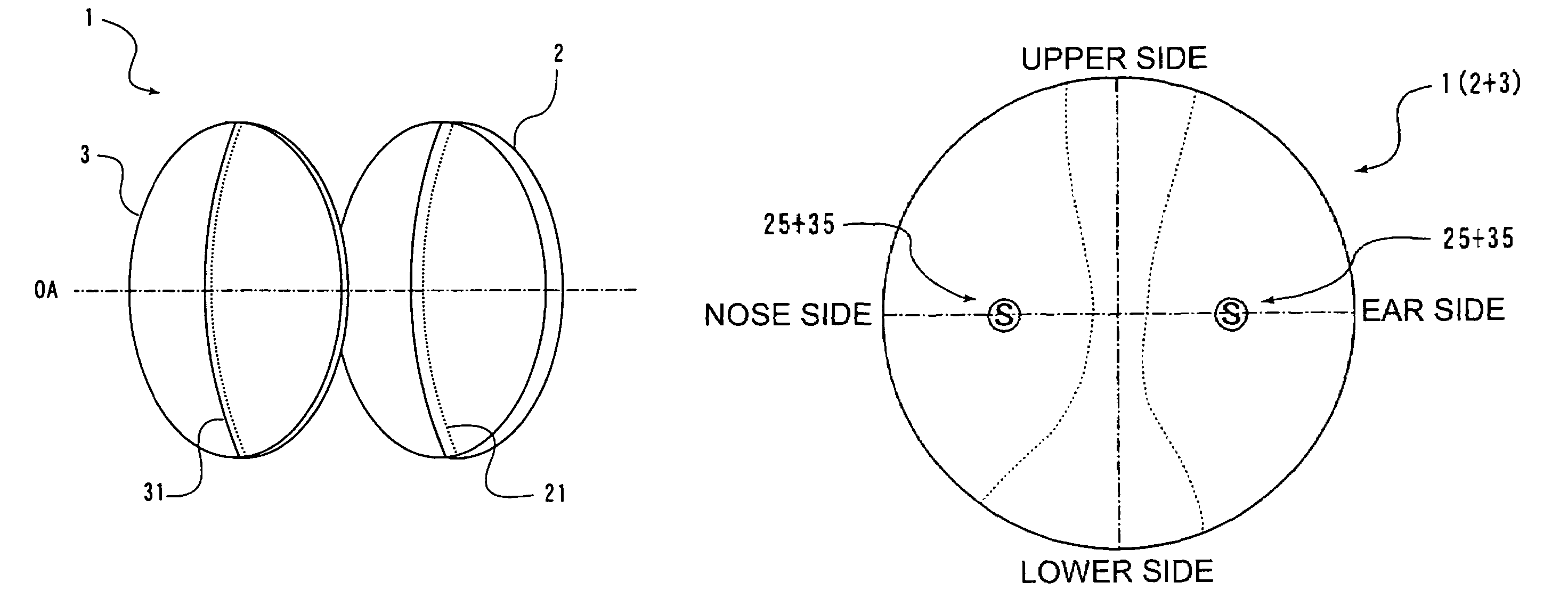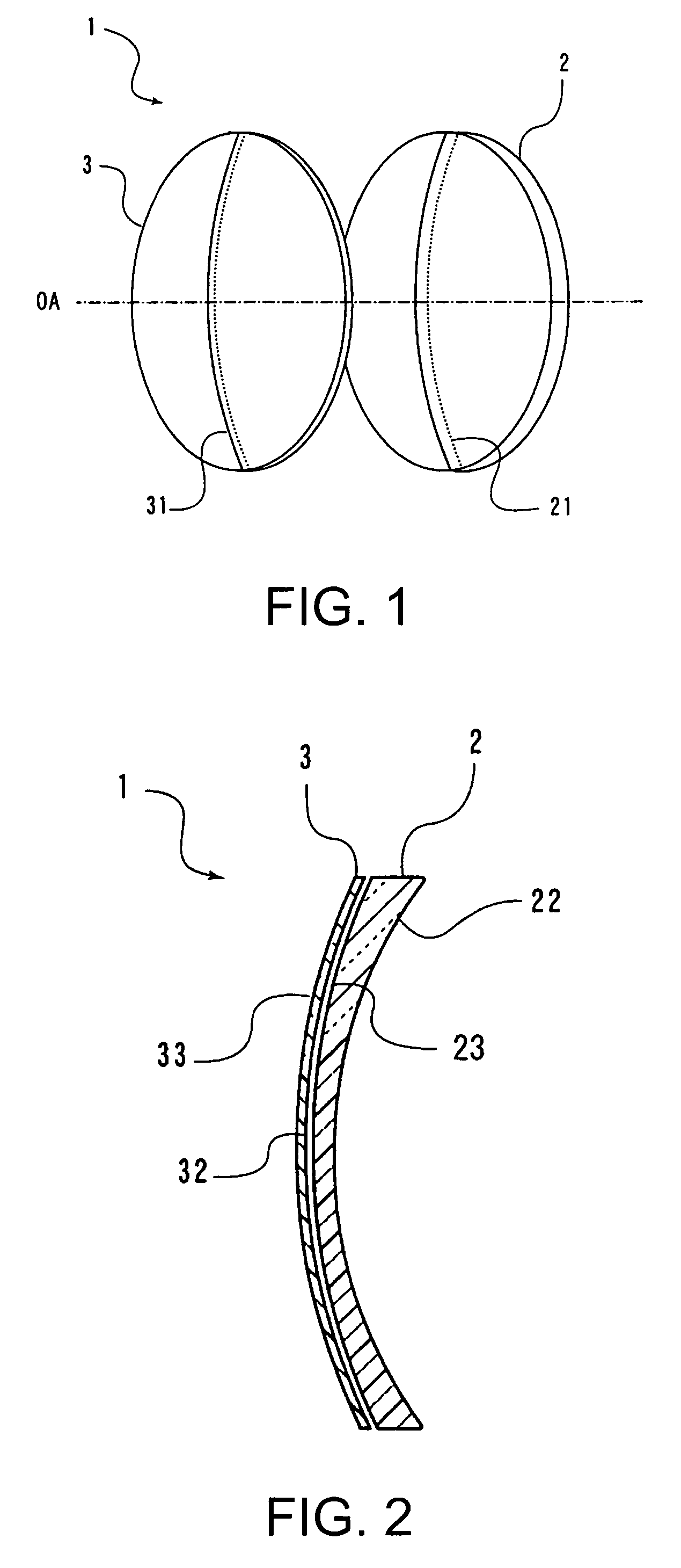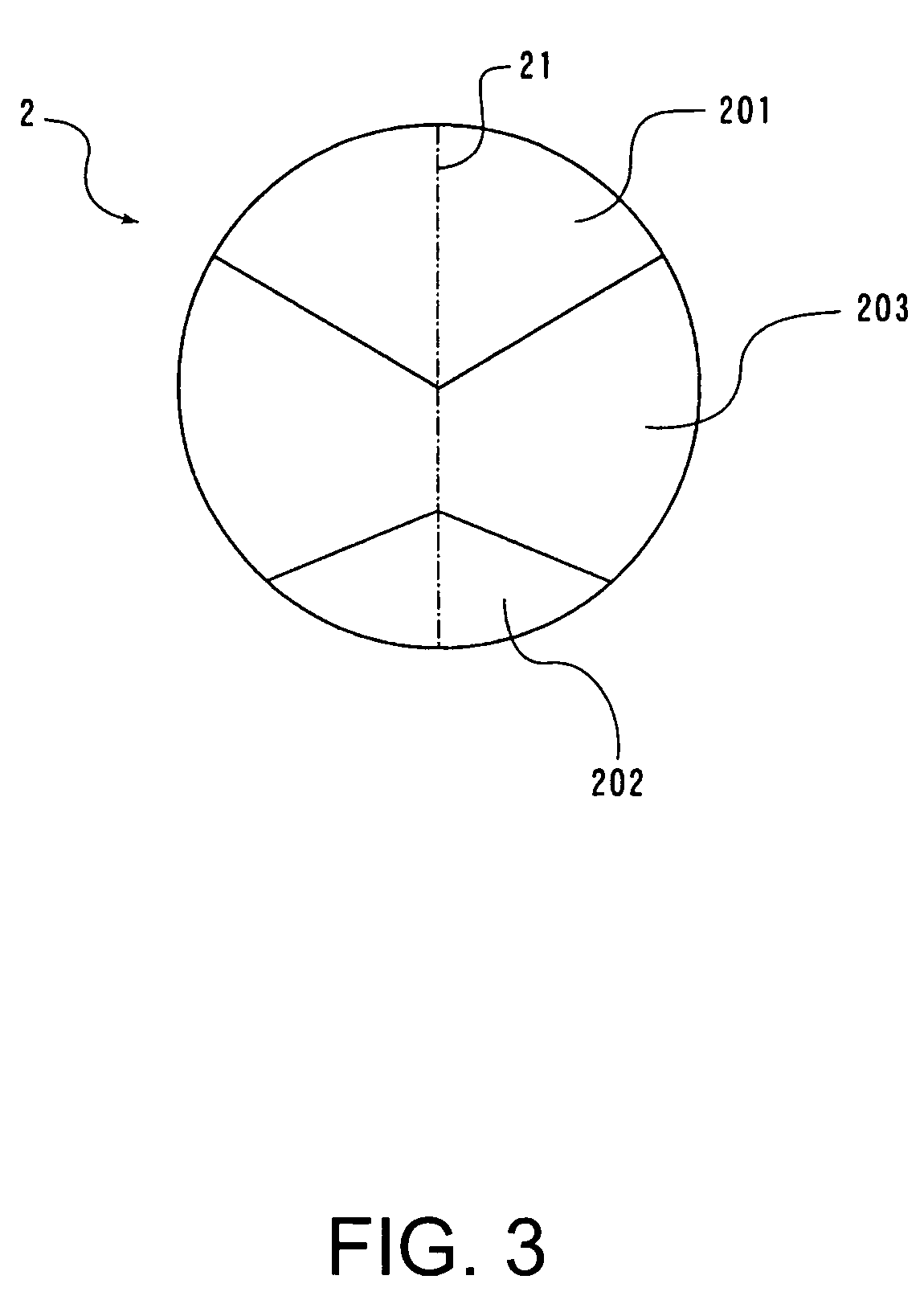Combined spectacle lens, auxiliary lens, and method of edging lenses
a technology of edging lens and spectacle lens, which is applied in the direction of optics, instruments, optical parts, etc., can solve the problems of not being designed to be optimal for different applications, increasing costs, and inability to obtain optimal optical performance for different applications in one design, so as to achieve convenient change, secure assembly accuracy, and easy change of design type or the like of the basic lens
- Summary
- Abstract
- Description
- Claims
- Application Information
AI Technical Summary
Benefits of technology
Problems solved by technology
Method used
Image
Examples
Embodiment Construction
[0054]An embodiment of a combined spectacle lens, an auxiliary lens, and a method of edging the combined spectacle lens of the invention will be described below. However, the invention is not limited to the embodiment shown below.
[0055]As shown in a perspective view in FIG. 1, a combined spectacle lens 1 of the invention includes a basic lens 2 which is a progressive-power lens and an auxiliary lens 3 used only for an application to be combined with the basic lens 2 and has a power to convert a design type of the basic lens 2. The basic lens 2 and the auxiliary lens 3 are used by being combined so as to align a principal meridian 21 of the basic lens 2 and a principal fixation line 31 of the auxiliary lens 3 to be aligned with the principal meridian 21, and align optical axes OA of the basic lens 2 and the auxiliary lens 3.
[0056]As shown in a cross-section of the combined spectacle lens 1 in FIG. 2, a combination mode in which the basic lens 2 is arranged on an eyeball side and the ...
PUM
 Login to View More
Login to View More Abstract
Description
Claims
Application Information
 Login to View More
Login to View More - R&D
- Intellectual Property
- Life Sciences
- Materials
- Tech Scout
- Unparalleled Data Quality
- Higher Quality Content
- 60% Fewer Hallucinations
Browse by: Latest US Patents, China's latest patents, Technical Efficacy Thesaurus, Application Domain, Technology Topic, Popular Technical Reports.
© 2025 PatSnap. All rights reserved.Legal|Privacy policy|Modern Slavery Act Transparency Statement|Sitemap|About US| Contact US: help@patsnap.com



